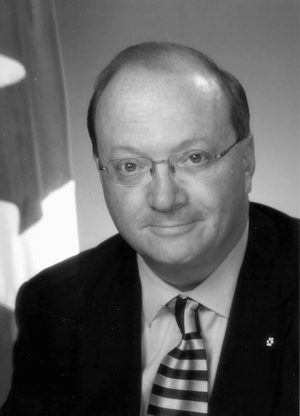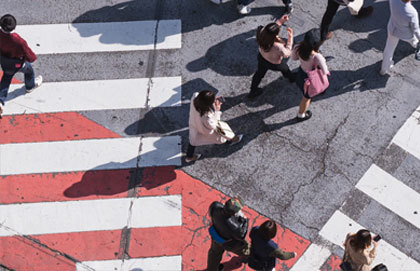In the 60th year of Queen Elizabeth II's reign, there is value in reflecting on the importance of dynamic symbols in societies where freedom of religion, cultural diversity and civility still matter. While I have written books and articles that engaged issues such as civility and its underpinnings, one of my most significant exposures to its instrumental worth occurred during Her Majesty's visit to Canada in 1959. I was eight years old.
According to Weekend Magazine, which summarized the quantum of her cross-country tour in 1959, Her Majesty reviewed 17 military parades, attended 21 formal dinners, reviewed 64 guards of honour, received 193 bouquets, made 381 platform appear- ances and shook hands well over 7,000 times. And there was one event that had a huge impact on this eight-year-old Canadian.
Her Majesty visited city hall in Outremont, a leafy suburb of Montreal with an upper-class French Canadian residential area on the west and north side of Mount Royal and, in the "bas ville," a thriving section of working class or even more modest immigrant Canadian families of Greek, Eastern European or Lebanese ancestry. Churches and synagogues of many diverse denominations were scattered throughout the community. City Hall is on Côte-Sainte-Catherine in an area of large homes, elegant brownstones and wide boulevards.
I was on my dad's shoulders as the open Cadillac with Her Majesty arrived. She exited the vehicle, was greeted by the local MP, the mayor, a Militia Regiment Colonel and other dignitaries, then walked through a centre aisle to a platform in front of the building to give a brief address before leaving in the limousine for points unknown. This was to be an extra-long and demanding tour, taking her to every Canadian region and the United States, where she visited Washington as the Queen of Canada. It was a beautiful and warm day. Her Majesty was radiant.
On the platform awaiting the Queen was the usual mix of dignitaries and local swells, including various civic, provincial and federal politicians, local clergy and community leaders. Flowered hats and medals abounded. Sitting in the back row, with Greek Orthodox, Roman Catholic, Anglican, Presbyterian and other clergy, was the rabbi of our family's small congregation, Rabbi J.J. Zlotnick, resplendent in his Homburg hat. He was at the end of the row, sitting on the aisle.
In the Outremont of the 1950s, the Beth Moishe (House of Moses) synagogue where he presided, and where I would have my Bar Mitzvah in 1963, was one of several in the larger city that had grown up reflecting the movement of Jewish immigrants and their first-generation Canadian offspring into more middle-class neighbourhoods. While rabbis outside the Hassidic community made no pretense at interceding on behalf of congregation members before the Almighty, J.J. Zlotnick certainly appeared to speak with immense clarity on His behalf. Sermons were not pleasant invocations of the benefits of prayer or regular synagogue attendance. They were stern warnings, not without cutting borschtbelt humour and sarcasm, about the wages of sin. Especially high on the list were interfaith-marriage (which inexorably resulted from talking to, shaking hands with or otherwise befriending Gentile men or women), avarice, eating other than strictly kosher food, non-attendance to both synagogue and to the daily commanded deeds: prayer, humility, charity, fidelity, teaching your kids how to swim, treating animals with kindness, not putting cheese in your salami sandwich (mixing milk and meat,), and praying three times a day, all of which numbered over six hundred in total.
He was charismatic, a great storyteller, a stern demander of respect and as much decorum as was possible during services and synagogue events. He was not unlikeable. But he reflected, as was the case with the Confessional schools maintained by the community, a very strong sense that while there was a broad Canadian community, the Jewish community was separate. Not better – separate. Separate not in a negative sense, but in the sense that, culturally and religiously, our way of life had to be apart.
With immigrant communities living in clusters, praying together, eating together, engaged fully in a robust family life that embraced people of the same background and faith, and sometimes only folks from one denomination of that faith, identity in the Canada of the 1950s was not about ghettos imposed from outside, but about self-imposed separate paths. While the restrictive covenants against mixing with Jews that defined some higherend residential areas are now gone, they were still present in the 1950s, and living separately was one way that minorities felt safer and more secure. Montreal back then was a city of ethnic and religious enclaves enforced not by the city or the laws but by the inhabitants for their own comfort.
I was interested in religion then, not because I came from a home that, on my mother's side, had a profoundly orthodox tradition but because my confessional Hebrew school added to the secular curriculum of the Protestant School Board of Greater Montreal a full curriculum of bible study, the Hebrew language, history and literature, and the vast commentaries and law treaties associated with rabbinical scholarship over the ages. I attended synagogue regularly. Because of my interest, my dad mentioned, as the Queen made her way to the platform, that Her Majesty was not only the Queen of England, Scotland, Northern Ireland, Wales, Canada, Australia and the rest of the Commonwealth but was also the head of the Church of England. While I was trying to absorb what this all meant, Her Majesty, after receiving the Royal Salute, extending her hand, which she did to Rabbi J.J. Zlotnick. He was, of course, already standing. He doffed his Homburg (under which a skullcap was pinned to his hair), bowed slightly and took the Queen's hand. They spoke for what seemed to this young observer to be a long time but was probably less than 30 seconds. Her Majesty continued on her way shaking other hands, then sat down in the front row to be formally introduced before she spoke. I have no recollection of what she said. I was completely taken by the Queen's gesture toward the rabbi of our tiny synagogue and the fact that they spoke to each other: he the purveyor of fire and brimstone about relating with Gentiles in any way; she the Sovereign and head of the Church of England!
That Saturday in synagogue I asked the rabbi what he and the Queen had spoken about. He looked at me with a glare that implied a touch of condescension and intense worldliness and said, "Hughie, one does not violate the confidences of our Sovereign." And in that very service, the place of the prayer for Queen and country – usually near the end of the service between the final mourner's Kaddish (prayer of sanctification) and the hymn "Adon Olam," or Master of the World, that marked the end of the services – was moved by rabbinical fiat. The prayer for the Queen occurred right after the Torah Scroll (the five books of Moses) were returned to the Ark and before the rabbi's weekly sermon, a sermon that Saturday on how fortunate we were to live in a country where freedom of religion was protected and where the right to be different did not mean exclusion from our fellow Canadians. And all because of the hand extended by a young Queen to a local rabbi before a speech – which I do remember was in impeccable French.
Words like inclusion, values and outreach would have meant nothing to me back then. But later, in grade four, when I noticed that amid all the sacred drawings of biblical figures from critical scenes of the Old Testament (e.g. Moses coming down from Sinai with the Ten Commandments, Joshua bringing down the walls of Jericho, David and Goliath and all the rest) at the front of the class above the blackboard a large photograph of Her Majesty and HRH the Duke of Edinburgh in his naval uniform. I asked our teacher, Mrs. Handelman, why the Queen's photo was placed above the biblical sketches. Her answer helped me understand the larger impact of that small gesture at Outremont City Hall in 1959. "We are, Hugh, all equal under the Crown. That is why we are all free to practise our own faith."
The Diefenbaker Bill of Rights, the multicultural programs of the Trudeau administration and the Charter of Rights and Freedoms all came after 1959. Her Majesty shook thousands of hands beyond those of the rabbi with the Homburg hat. Who knows what that gesture meant to other communities, faiths, ethnicities, economic subgroups and everyone else this young and beautiful Queen came into contact with? That she is the head of the Commonwealth as well as the Head of State of 16 of its member countries and has visited consistently across the Commonwealth in a spirit of duty and service, may at first blush seem quite disengaged from that gesture 53 years ago in front of the small, vine-covered Outremont City Hall.
That the Queen is the centre of the Commonwealth and the embodiment of the core set of Commonwealth values protected through the rule of law, democracy, human rights and respect for diversity is clear. It is entirely consistent with her extended hand in 1959. As is her opening speech at the recent 2011 Commonwealth Heads of Government Meeting in Perth, Australia, which created fresh impetus for the Eminent Persons Group report commissioned by the Commonwealth heads two years ago. That report offered specific recommendations to sustain these core Commonwealth values despite a sleepy Secretariat in London and a growing disposition to ‘get along by going along' with serious human rights and antidemocratic breeches in a few member states.
Around the world, incivility, poverty, genocidal risk, forced marriage, oppression and discrimination are still with us, and while many Commonwealth countries, in fact the majority, do better on these fronts than others and have made great strides, there remains work to be done. If the Commonwealth, as a non-military, voluntary association of 54 nations embracing 2.1 billion human beings and every faith, race and creed in the world, is to be true to the spirit and purport of that extended hand, we must be true to that spirit to be a constructive, co-operative, tolerant and engaged force for good in the world. Beyond some of the excellent work on Apartheid, the promotion of democracy, the protection of rights and small states, and development and education, there remains much to be done.
That is the task ahead and the challenge that Commonwealth leaders took positive steps to address in Perth. But much was left undone and incomplete despite the 106 recommendations made by the Eminent Persons Group, which represented every region of the world in which the 54 Commonwealth nations are found.
Her Majesty shook hands with the heads of government who came to Perth with the same warmth and engagement that has characterized her work as head of the Commonwealth, Canada's Queen and the defender of the faith for six remarkable decades of service. That handshake has never mattered more.






